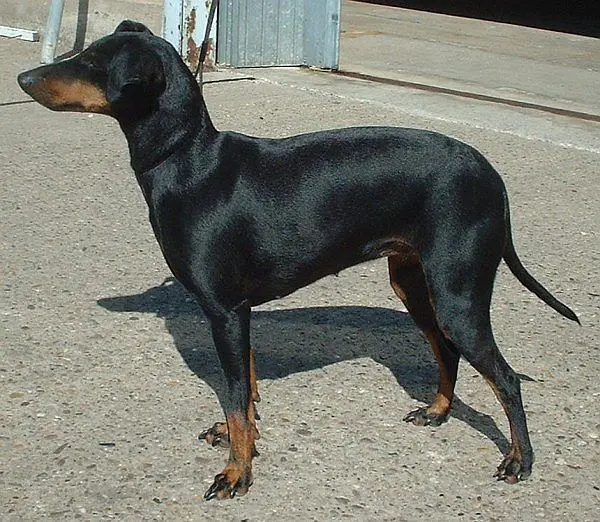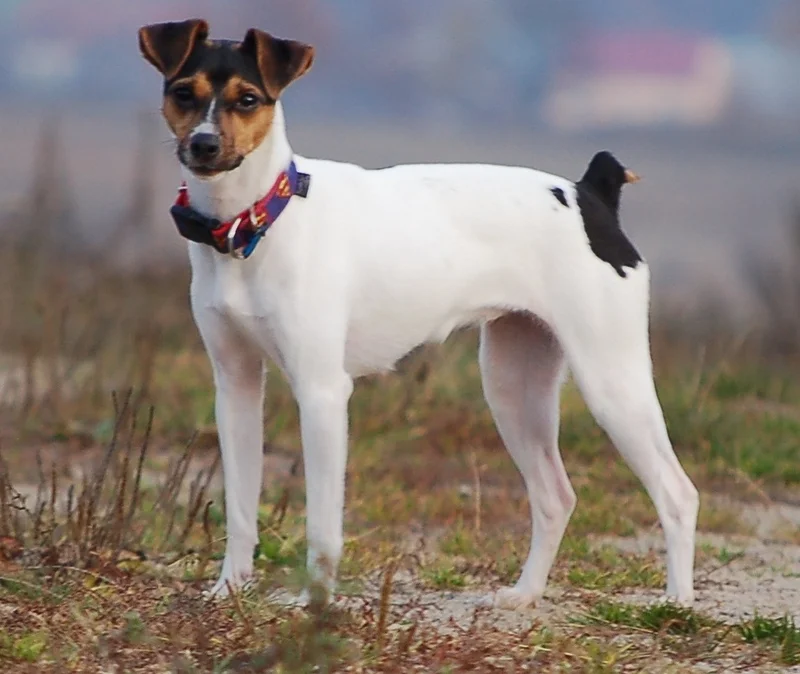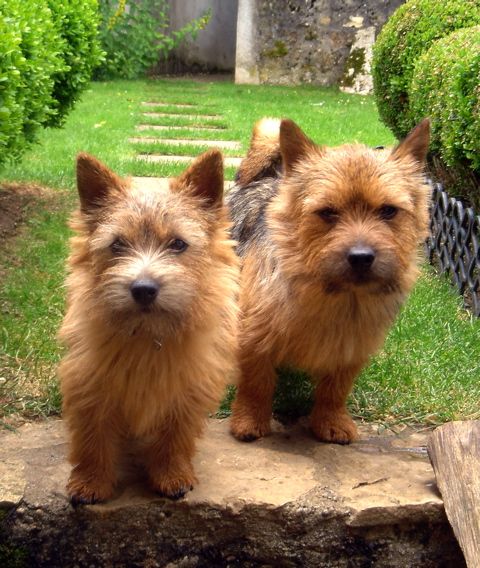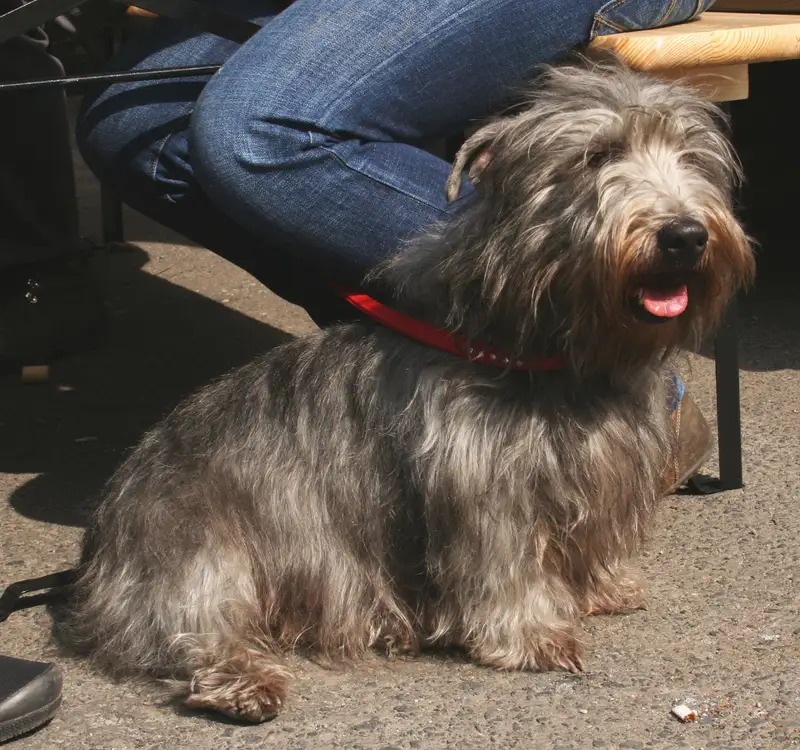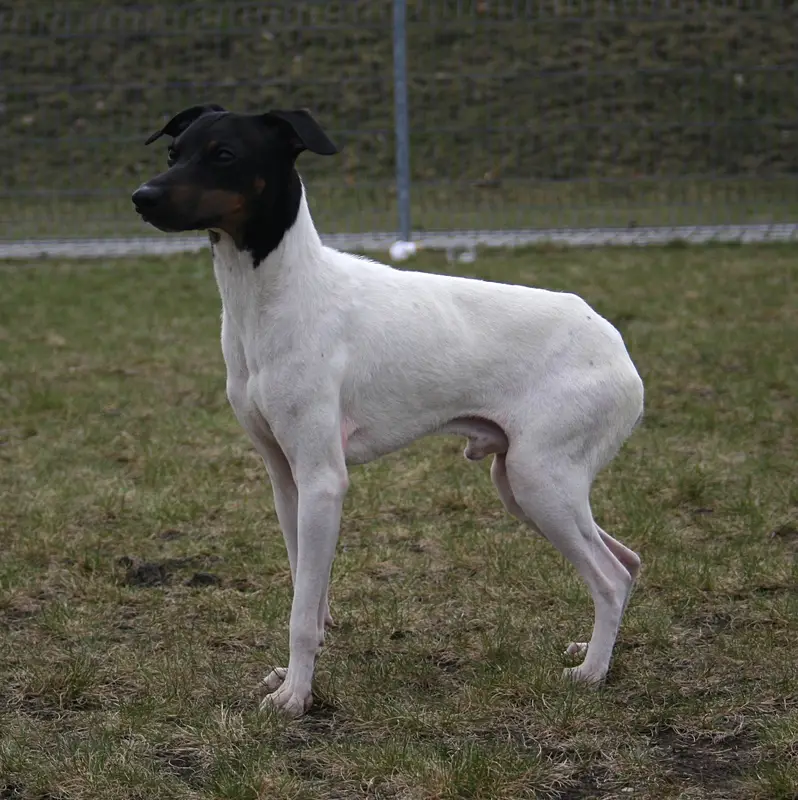Plummer Terrier
The Plummer Terrier is a spirited and intelligent breed, known for its affectionate nature and strong prey drive. Developed for hunting, they thrive on exercise and companionship.
Overview
🐕Breed Overview
✨Key Traits
💡What Makes Plummer Terrier Special
The Plummer Terrier is characterized by its energetic and playful nature. They are intelligent dogs that require mental stimulation to prevent boredom.
Their strong prey drive makes them excellent hunters, but it also means they need supervision around smaller pets. They are known for their affectionate disposition, often forming strong bonds with their families.
Their adaptability allows them to thrive in both urban and rural settings, as long as their exercise needs are met. Overall, they are spirited companions that bring joy and enthusiasm to their households.
The Plummer Terrier is a spirited and intelligent breed that embodies the essence of a true working terrier. Developed in the late 20th century by Brian Plummer, this breed is a blend of the Dandie Dinmont Terrier, Bull Terrier, and Whippet, resulting in a compact, agile dog with a playful demeanor. With a height of about 12 to 15 inches and a weight ranging from 15 to 25 pounds, the Plummer Terrier is well-suited for various living environments, including apartments, provided they receive adequate exercise.
Historically bred for hunting foxes and controlling vermin, the Plummer Terrier showcases a strong prey drive and a courageous spirit. Their intelligence and eagerness to please make them relatively trainable, although they can be stubborn at times. Early socialization and consistent training are essential to help them develop into well-mannered companions.
In terms of personality, Plummer Terriers are known for their affectionate nature and playful attitude. They thrive on human interaction and enjoy being part of family activities. Their friendly disposition makes them good with children, although supervision is recommended during playtime with smaller pets due to their strong prey drive.
Grooming needs are relatively low, with regular brushing to manage shedding and maintain coat health. Their exercise requirements are moderate, with daily walks and playtime being essential to keep them happy and healthy. Overall, the Plummer Terrier is a versatile breed that excels in various roles, from hunting companion to family pet.
Their spirited nature, intelligence, and affectionate demeanor make them a delightful addition to any household.
🎉Fun Facts
Despite their small size, they are known for their courageous nature and can be quite protective of their families.
Plummer Terriers are known for their agility and speed, making them excellent competitors in dog sports.
They have a strong prey drive, which can make them enthusiastic hunters.
Breed Characteristics
Family & Friends
Good Behavior
Get Up & Go
Household Harmony
Temperament & Personality
✨Key Traits
🐕Core Temperament
Plummer Terriers are known for their friendly and outgoing temperament. They are affectionate with their families and enjoy being part of household activities.
While they can be reserved with strangers, they are not typically aggressive. Their playful nature makes them great companions for children, and they often enjoy interactive play.
However, their strong prey drive means they should be supervised around smaller pets. With proper training and socialization, they can be well-mannered and adaptable to various living situations.
💫Personality Profile
Plummer Terriers are lively and affectionate dogs that thrive on human interaction. They are known for their playful demeanor and high energy levels, making them great companions for active families.
Their intelligence allows them to learn commands quickly, but they can also be stubborn, requiring consistent training. They are generally good with children and can adapt well to various living situations, provided they receive enough exercise and mental stimulation.
While they may exhibit some territorial behavior, proper socialization can help mitigate this tendency.
🔊Vocal Tendencies
Plummer Terriers are generally moderate barkers. They may bark to alert their owners of strangers or when they are excited.
While they are not excessive barkers, they can become vocal if bored or not adequately exercised. Their barking is typically friendly and alerting rather than aggressive, making them suitable for families and homes with children.
Affection & Social Traits
Energy & Activity
Communication Style
Care Requirements
🏃♂️Exercise Requirements
Daily Exercise
The Plummer Terrier is an energetic breed that requires regular exercise to maintain its physical and mental well-being. Ideally, they should engage in at least 60 minutes of exercise daily, which can be broken down into several sessions throughout the day. Activities such as brisk walks, playtime in a secure yard, and interactive games like fetch or tug-of-war are excellent for this breed.
They also enjoy agility training and other dog sports that challenge their agility and intelligence. Puppies should have shorter, more frequent play sessions to avoid overexertion, while senior dogs may require gentler activities to accommodate their energy levels. Regular exercise helps prevent behavioral issues such as boredom and anxiety, which can lead to destructive behaviors.
Insufficient exercise can result in weight gain and a decrease in overall happiness and health.
Preferred Activities
🏠Living & Adaptability
Space Requirements
Plummer Terriers are adaptable and can thrive in various living environments, including apartments, provided they receive adequate exercise. They require space to run and play, so a home with a secure yard is ideal.
In smaller living spaces, owners should ensure daily walks and playtime to meet their exercise needs. The breed's size and energy level make them suitable for both urban and rural settings, but they should not be confined for long periods, as this can lead to frustration and behavioral issues.
Climate Preference
🍲Feeding Guide
Schedule
Food Types
Portion Size
Special Nutritional Needs
Plummer Terriers may benefit from a diet rich in protein to support their active lifestyle. It's important to monitor their weight and adjust portions accordingly to prevent obesity.
Some individuals may have food sensitivities, so a grain-free or limited ingredient diet may be beneficial. Regular veterinary check-ups can help assess their nutritional needs and overall health.
✨Grooming Requirements
Grooming Overview
The Plummer Terrier has a short, dense coat that requires minimal grooming. Regular brushing once a week is sufficient to remove loose hair and prevent matting.
Bathing should be done as needed, typically every few months or when the dog gets particularly dirty. Nail trimming should be performed regularly to keep their paws healthy, and dental care is essential to prevent dental issues.
Overall, the grooming routine for a Plummer Terrier is straightforward and manageable for most owners.
Care Schedule
Brush weekly; bathe as needed; trim nails every 2-4 weeks.
Health Profile
⚕️Health Care
Regular veterinary care is crucial for maintaining the health and longevity of the Plummer Terrier. Routine check-ups, vaccinations, and preventive treatments for parasites are essential.
Early detection of health issues can lead to more effective management and treatment. Owners should also be proactive in monitoring their dog's health and behavior, addressing any concerns promptly.
Health Issues Overview
⏳Average Lifespan
Genetic Factors
Genetics play a significant role in the Plummer Terrier's lifespan, with certain hereditary health issues being more prevalent in the breed. Responsible breeding practices that prioritize health and genetic diversity can help reduce the risk of inherited conditions. Potential owners should seek reputable breeders who conduct health screenings and provide health guarantees for their puppies.
Living Conditions
The Plummer Terrier thrives in environments that provide ample opportunities for exercise and social interaction. A home with a secure yard is ideal, allowing them to run and play freely.
Urban settings can work as long as they receive daily walks and mental stimulation. Their lifespan can be positively influenced by a healthy diet, regular veterinary care, and an active lifestyle.
Dogs that are well-socialized and engaged in activities tend to live longer, happier lives.
🏥Common Health Issues
Hip Dysplasia
Warning Signs
🔬Diagnosis
X-rays and physical examination by a veterinarian.
💊Treatment
Medications, weight management, and in severe cases, surgery.
📝Management Tips
Maintain a healthy weight, provide joint supplements, and avoid excessive jumping or strenuous activities.
Patellar Luxation
Warning Signs
🔬Diagnosis
Physical examination and X-rays.
💊Treatment
Surgery may be required in severe cases.
📝Management Tips
Weight management and avoiding high-impact activities.
Progressive Retinal Atrophy (PRA)
Warning Signs
🔬Diagnosis
Ophthalmic examination by a veterinary ophthalmologist.
💊Treatment
No cure, but adaptations can help the dog adjust.
📝Management Tips
Regular eye check-ups and monitoring for changes in vision.
🛡️Preventive Care
🔬Hip Evaluation
Hip Evaluation: Assesses the hip joints for dysplasia and other abnormalities.
📅 Annually after 2 years of age.
🔬Patellar Luxation Assessment
Patellar Luxation Assessment: Evaluates the stability of the kneecap.
📅 Annually after 2 years of age.
🔬Ophthalmic Examination
Ophthalmic Examination: Checks for hereditary eye conditions, including PRA.
📅 Every 1-2 years, especially as the dog ages.
Training
🧠Intelligence & Trainability
💪Work Drive
Plummer Terriers have a strong work drive and thrive when given tasks to complete. They enjoy activities that challenge their intelligence and physical abilities, such as agility training, scent work, and obedience competitions.
Providing them with mental stimulation through puzzle toys or interactive games is crucial for their well-being. Without sufficient mental and physical engagement, they may become bored and exhibit undesirable behaviors.
Their history as working dogs means they are happiest when they have a job to do, whether it's hunting, playing, or participating in dog sports.
⚠️Training Considerations
Plummer Terriers can exhibit stubbornness and a strong-willed nature, which may pose challenges during training. They may become easily distracted, especially if they catch a whiff of something interesting.
To overcome these challenges, consistent and positive reinforcement training methods are recommended. Engaging them with interactive toys and puzzles can also help maintain their focus.
Early socialization is crucial to ensure they develop into well-rounded adults, as they may display territorial behaviors if not properly introduced to new people and pets.
📝Training Tips
Training a Plummer Terrier requires patience and consistency. Start with basic obedience commands and gradually introduce more complex tasks.
Use positive reinforcement techniques, such as treats and praise, to encourage good behavior. Short, frequent training sessions are more effective than long, drawn-out ones, as they help keep the dog's attention.
Incorporating play into training can also enhance their engagement. Socialization with other dogs and people from a young age is essential to prevent any aggressive tendencies and to promote friendly interactions.
History & Heritage
📜Origin Story
The Plummer Terrier's story begins in the late 20th century when Brian Plummer sought to create a small, effective working terrier. Drawing on his experience with various terrier breeds, he combined the traits of the Dandie Dinmont Terrier, Bull Terrier, and Whippet to produce a dog that could excel in hunting and vermin control.
The breed was named after Plummer himself, who was instrumental in its development. The Plummer Terrier quickly gained a reputation for its intelligence, agility, and friendly demeanor, making it a popular choice among dog enthusiasts and families alike.
Today, the breed is recognized for its versatility and charm, embodying the spirit of a true working terrier while also thriving as a companion animal.
⏳Development History
The Plummer Terrier was developed in the 1990s by Brian Plummer, who aimed to create a small, agile working terrier. This breed is a mix of the Dandie Dinmont Terrier, Bull Terrier, and Whippet, resulting in a dog that is both functional and aesthetically pleasing.
The breed was designed for hunting and vermin control, showcasing a blend of strength, agility, and intelligence. Over time, the Plummer Terrier has evolved to become a beloved companion, known for its playful and affectionate nature.
Despite its working origins, the breed has adapted well to family life and is often seen as a loyal pet.
🛡️Purpose & Historical Role
Originally bred for hunting foxes and badgers, the Plummer Terrier was also utilized for controlling rodent populations. Its compact size and agile build made it an effective hunter, capable of navigating tight spaces and pursuing quarry underground.
Over the years, the breed has transitioned into a beloved family pet, known for its playful and affectionate nature. While still retaining its hunting instincts, the Plummer Terrier is now more commonly seen as a companion animal, excelling in various dog sports and activities.
🏺Cultural Significance
The Plummer Terrier, developed by Brian Plummer in the late 20th century, has gained recognition for its versatility as a working terrier and companion. Its origins are rooted in the need for a small, agile dog capable of hunting and controlling vermin, particularly in rural settings.
The breed's development reflects a blend of various terrier types, making it a unique addition to the terrier group. While not widely recognized by major kennel clubs, the Plummer Terrier has a dedicated following among enthusiasts and is appreciated for its intelligence and spirited nature.
Conservation Status
This breed is less common but has stable populations in certain regions.
